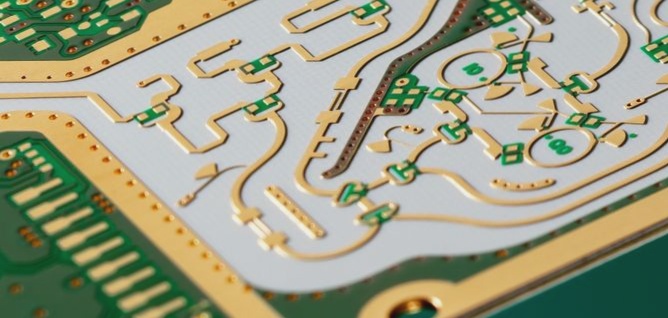The practical application of the PCB thermoelectric phenomenon is the use of thermocouples to measure temperature. The complex relationship between electron energy and scattering results in different thermoelectric potentials for various metals. Since the thermocouple relies on this, the difference in thermoelectric potential between its two electrodes indicates the temperature difference between the hot and cold ends. If the thermoelectric potential varied universally among all metals and alloys, using thermocouples for temperature measurement would be impractical. This potential difference is known as the Seebeck effect. For a pair of conductors, A and B, made of different materials, if one junction is kept at temperature T1 and the two free ends are kept at a lower temperature To, with the contact point and free ends in an area of uniform temperature, both conductors experience the same temperature gradient. To measure the thermoelectric potential difference between the free ends A and B, a pair of conductors C of the same material are connected to conductors A and B at temperature To and connected to a detector at temperature T1. The Seebeck effect is not a phenomenon occurring at the connection point but rather one related to the temperature gradient. Understanding this aspect is crucial for accurately assessing thermocouple performance.

1. The application range of PCB thermocouple temperature measurement is very broad, and the challenges encountered are diverse. Therefore, this chapter can only delve into some key aspects of thermocouple temperature measurement.
2. Thermocouples remain a primary method for temperature measurement across many industries, especially in steelmaking and petrochemical sectors. However, with the advancement of electronics, resistance thermometers are increasingly used in the PCB industry, making PCB thermocouples less prominent as the ultimate industrial thermometer.
3. Compared to thermocouples, which measure temperature through resistance and thermoelectric potential, resistance thermometers offer advantages due to their fundamentally different working principles. The resistance thermometer indicates the temperature of the area where the resistance element is located, independent of the lead and the temperature gradient along it.
4. Conversely, thermocouples measure the temperature difference between the cold and hot ends by assessing the potential difference between the electrodes at the cold end. For an ideal thermocouple, this potential difference is solely related to the temperature difference between the two ends. However, in practical thermocouples, non-uniformities in the thermocouple wire due to temperature gradients can alter the potential difference, limiting accuracy.
5. There are seven types of international thermocouples designed with PCB thermal considerations, known as “standardized thermocouples.” These include the nominal composition of each electrode, the general trade name of each alloy, and the corresponding letter codes.
6. These letter codes, originally introduced by the Instrument Society of America (ISA), are now widely used globally and serve as a standard reference for various types of thermocouples.

1. The application range of PCB thermocouple temperature measurement is very broad, and the challenges encountered are diverse. Therefore, this chapter can only delve into some key aspects of thermocouple temperature measurement.
2. Thermocouples remain a primary method for temperature measurement across many industries, especially in steelmaking and petrochemical sectors. However, with the advancement of electronics, resistance thermometers are increasingly used in the PCB industry, making PCB thermocouples less prominent as the ultimate industrial thermometer.
3. Compared to thermocouples, which measure temperature through resistance and thermoelectric potential, resistance thermometers offer advantages due to their fundamentally different working principles. The resistance thermometer indicates the temperature of the area where the resistance element is located, independent of the lead and the temperature gradient along it.
4. Conversely, thermocouples measure the temperature difference between the cold and hot ends by assessing the potential difference between the electrodes at the cold end. For an ideal thermocouple, this potential difference is solely related to the temperature difference between the two ends. However, in practical thermocouples, non-uniformities in the thermocouple wire due to temperature gradients can alter the potential difference, limiting accuracy.
5. There are seven types of international thermocouples designed with PCB thermal considerations, known as “standardized thermocouples.” These include the nominal composition of each electrode, the general trade name of each alloy, and the corresponding letter codes.
6. These letter codes, originally introduced by the Instrument Society of America (ISA), are now widely used globally and serve as a standard reference for various types of thermocouples.




